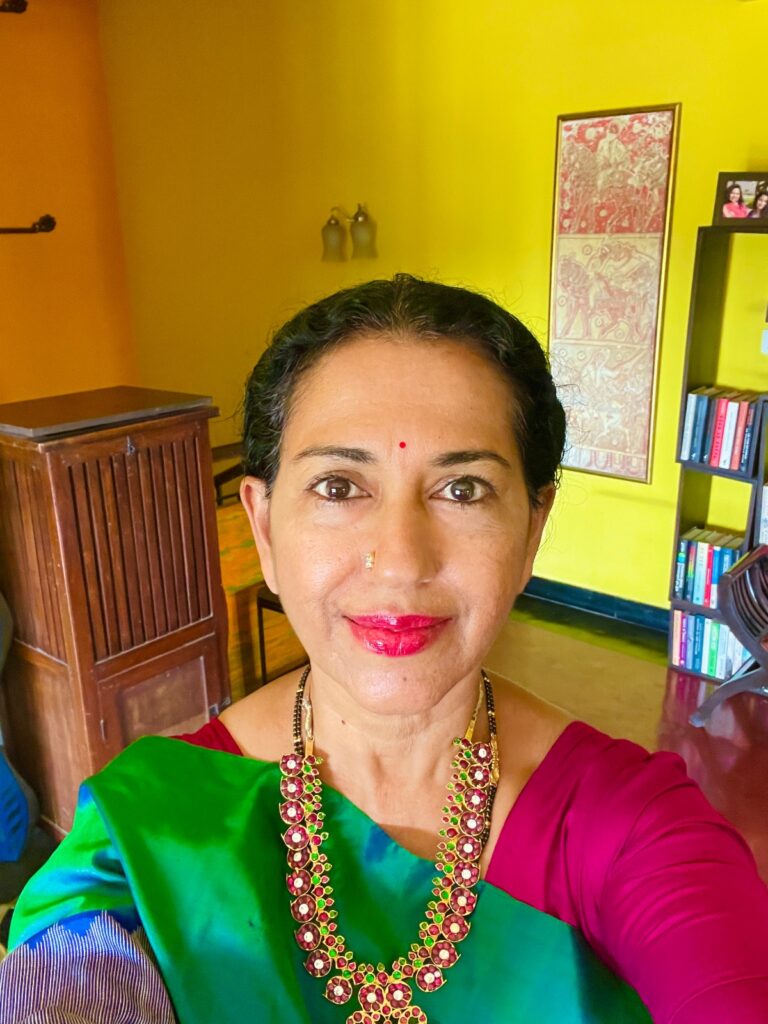Shoba Narayan is the author of five books. As a journalist and columnist, she writes about health, relationships, travel, food and culture for global publications, winning a James Beard award and Pulitzer Fellowship. She has taught and lectured at universities in India (IIM-B and IISc) and abroad. She is the host and anchor of Bird Podcast: about birds and nature. She enjoys wine, studies Jung and is a gadget geek. Her lifelong mission is to get fit without exercising and lose weight without dieting.

Samir and Anya are among our closest friends. Recently, when we had dinner, they told us about a ritual that they had started. Every night, they would each say something nice about each other. It began as compensation after a huge fight, said Anya, but soon it became a habit, a ritual.
“It sounds corny, and it didn’t come easy to us but it feels good,” said Samir.
Telling each other nice things isn’t part of most ancient cultures including India, China, and Europe. Think about it. Have any of you heard your parents say that overused phrase, “I love you” to each other? We all grew up in families where affection was not shown; where public display of affection was minimal and indeed frowned upon. Even newlyweds rarely hold hands in most of India.
For Indians, love is shown through actions. We feed (overfeed?) people we love. We fold our daughters’ clothes, mend our sons’ banians, pack our husband’s lunch boxes, and buy our wives’ jewellery and favourite fruits like sita-phal.
There are five languages of love, according to a book of the same name by Gary Chapman. They are words of affirmation, acts of service, quality time, physical touch, and gifts. Indians, at least in the previous generation, don’t do words of affirmation. Which Indian father says, “I am proud of you,” to their child? Physical touch too, is hardly done in this country. I think it is because we are constantly bombarded by physical touch in our public spaces—in buses, trains and metros. Luxury for an Indian, is lack of physical contact.
In India, our love languages are gifts, which we give and take extravagantly and with panache—at our weddings, when we visit each other and refuse to go “empty-handed,” and when we see long-lost friends and relatives. Acts of service too are part of our culture. Each of us has a story about travelling on a train and having relatives bring hot tiffin for us at stations and handing it over to us just as the train left the station. Quality time is something that we used to take for granted but now is the hardest thing to get mostly because all of us are slaves to smartphones and serials on television. I cannot visit my 80-year-old aunt after 6:30 pm because she will not talk or take her eyes off the daily television serials that she watches.
Words of affirmation, even in our own generation, are hard, not just for Indians but in many cultures. Telling our friends that we love and admire them is hard. Mostly, we make fun of them, insult them, take them down. This is our love language, which is why I couldn’t understand what Samir and Anya meant when they described their ritual. What do you mean? Give examples, I demanded.
“Each night, we think about the day gone by and say one nice thing. It could be as simple as, I liked how you explained the Urdu shairi in today’s Shujaat Khan’s concert to me. Or I enjoyed how you and your cousins were chatting about your weird relatives. It is usually specific to the day,” explained Samir.
They tried to do this every night but weren’t hard and fast about it, said Anya. “It has become an enjoyable ritual. I think we both like it because it gives us connection,” she said.


Connection is what defines us as humans and it is one thing that exponentially increases our happiness. This isn’t some deep profound confide-all-secrets type of connection that I am talking about, although that too is good. These are micro-connections that take seconds and minutes to create and foster. The great part about living in India is that we all do this anyway—or used to.
Micro-connections and micro-moments are the buzzwords today. There are many ways to foster this but if I had to give you one takeaway based on all the research I have done, it would be this: next time you encounter a human or another species, just engage, even if it is just for a few minutes. Here are some examples of how to do this.
- You see a neighbour in your community. Instead of smiling and walking away, stop and say hello. It will just take two minutes but will enhance the feel-good hormones in your body.
- You go to buy vegetables or fruits. Ask the vendor about his family. This is easy in India where we all have connections with our dhobi, isthiri-wallah, milkman, flower lady, etc.
- You are standing in line somewhere. Chat with your neighbour instead of being on your smartphone.
- You are standing outside the theatre and see someone who looks familiar. Don’t look away. Just smile at them. This “positivity resonance” which is a small moment of connection, increases oxytocin synchrony between two people, thus building cooperation and compassion.
- Such micro-moments of happiness can be created, practised and nourished.
There is one small thing that I have been practising. These days when there is a situation to burst out laughing, usually because a friend has said something funny, I hold my friend’s gaze and laugh out loud. This too, doesn’t come naturally to most people. We all start laughing and look away. But holding a friend or loved one’s gaze as you laugh gives delight and doubles the happiness.
Just try it and see.
Read more blogs on https://wisdomcircle.com/blog/






